One of the more rewarding genres of photography is that of Newborn Photography.
In a previous post I touched (very briefly) on the subject and thought a more in-depth post specifically providing newborn photography tips for beginners could be very useful to my readers – and will possibly even benefit those with newborn photography experience.
I stated in my earlier post that you need to practice a range of techniques in regard to poses, baby-wrapping, lighting etc.
In this post I want to expand on that and really push for you to gain confidence in your skills by promoting one newborn aid I believe should be in every newborn photographer’s bag.
It’s almost as important as your camera and I will get to it shortly but first I want to clear up what newborn photography actually is as it seems to be different things to different people.
Contents
What is Newborn Photography?
The broader definition of a newborn is offspring less than a month old.
Newborn photographers would argue that the definition in relation to newborn photography is more defined than that and extends only to ten or twelve days at the most.
After that very short period this newborn phase starts changing to the infant stage – a small, but very distinctive, difference that is quite pronounced if you are a photographer.
The whole dynamic of the photo session changes after 12 days and the “newborn” opportunity is no longer available.
The infant stage lasts up until about a year or so and then morphs into the toddler phase.
Newborn babies spend the first two weeks of their lives feeding and sleeping.
This is the best time to photograph them as “newborns” as they are compliant and easy to pose.
After a couple of weeks they discover their arms, fingers. legs, toes, etc and spend hours discovering these weird, and previously unknown, appendages that seem to move on their command.
And then of course there is this fascinating new world and strange bunch of adults all around them! Who has time to sleep with all this going on?
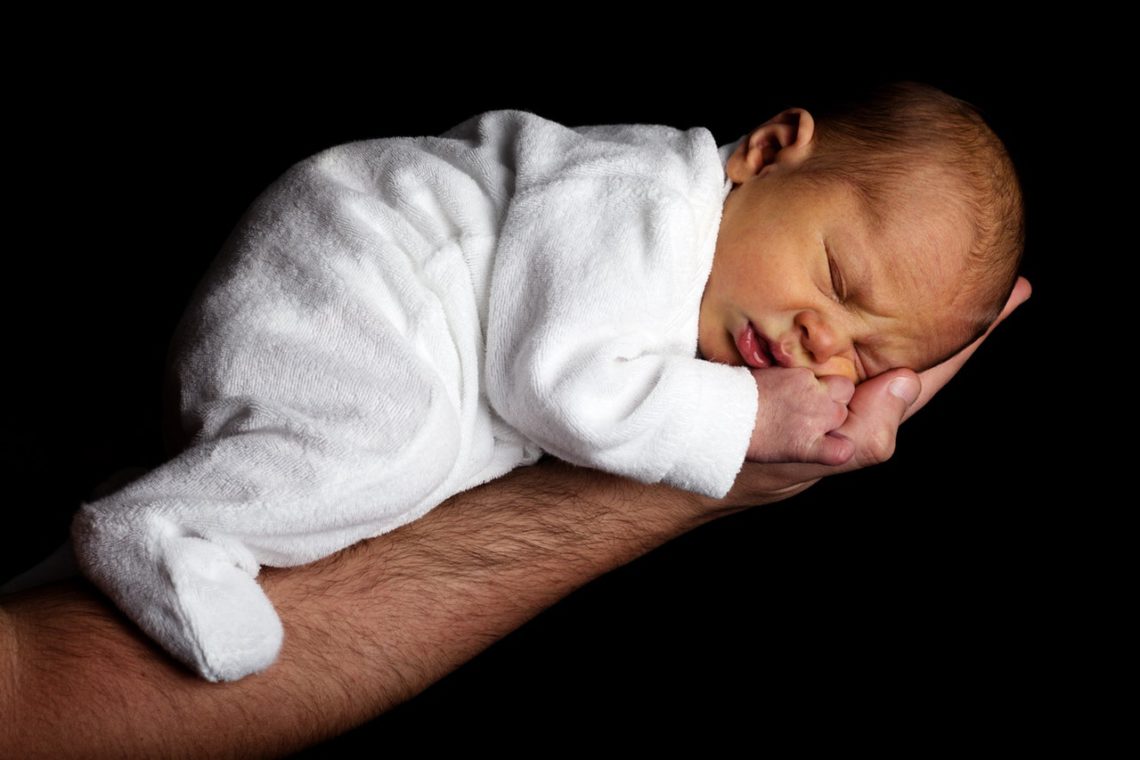
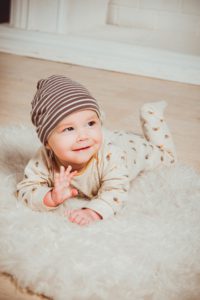
The Many Hats Worn by a Newborn Photographer - taking good photos is not enough
The Newborn Photographer ... delivering stunning images
Every parent expects a Newborn photographer to be able to produce beautiful, memorable photos of their baby.
It goes without saying you need to be able to take reasonable good, sharp photos.
This is a very special time in a family’s life and they want memories that they will love and cherish forever.
They have entrusted you to capture this special time for them and your photo skills need to be second nature and finely honed.
Taking good photos is only a small part of the reason people will entrust their newborn photographic session to you.
The real reason for trusting you lies not in your photography skills but more in your people skills and the trust you develop long before the newborn arrives at your studio for the actual photo session.
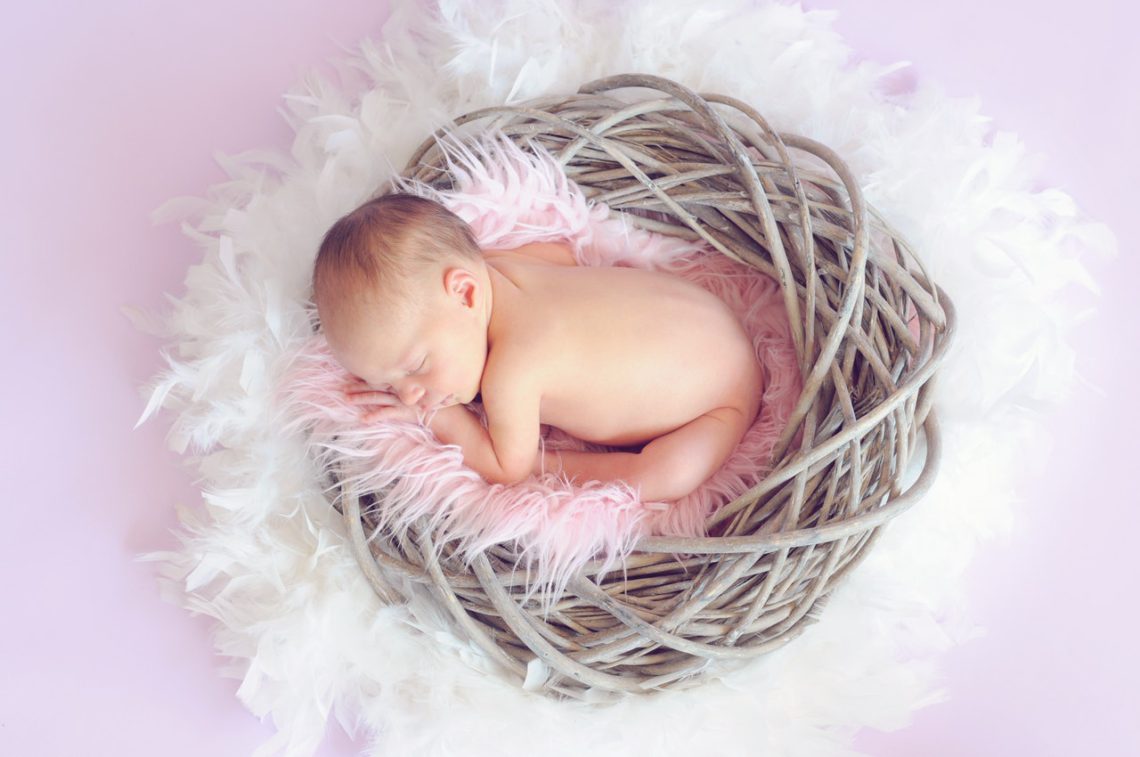
The Confident Director - willing and able to safely guide
Everyone will be looking to you for your guidance and experience – it can be very daunting (even terrifying) for your first newborn session – you need to project an air of confidence. Without your confident leadership and your session could very quickly turn into a disaster.
Knowing what to do, when to do it and how to do it is key to creating this air of confidence around your actions and the entire newborn session.
You’ll need to know how to pose the Newborn, what poses and outfits you intend using and the order in which you intend to create the images.
Keep things flowing and start or end with the end in mind, either adding to or removing outfits as you go progress through the session.
- Design a flow chart of the proposed session – bearing in mind that you may well have to adapt depending on circumstances during the session.
- Flexibility is key so be prepared for the unexpected – it will happen.
- Always ensure baby’s safety and comfort are paramount in everything you do.
- This includes knowing when to stop and allow the baby to feed or even sleep.
- Whilst you are the overall director do take guidance and listen to mum’s concerns and suggestions.
- Keep everyone happy with a firm and gentle, caring hand.
The Empathetic, Caring Confidante ... and understanding, trustworthy friend
While a newborn session is exciting and a lot of fun there is a great deal of underlying emotions that are going on.
You can have anyone of a number of situations in front of you and being able to cope with each situation may require a different approach.
First time mother’s and babies present a different set of circumstances to those with existing children.
For the new mum there are her concerns and emotions to deal with, the baby’s father too will be new to the experience and expecting your professional guidance.
They may not have a clue what to do and it is up to you to educated them guide them through the session in a confident, safe, fun and professional manner.
Where siblings are involved – well now you have a different set of issues to deal with and knowing how to put them at ease and share in this wonderful occasion requires yet another set of skills from you.
Siblings are usually very excited at the prospect of a new brother or sister but reality can sometimes be very different when they realise this new addition now has all the attention.
This can impact on the way they behave at the Newborn session and it is a good idea to involve them and include them as a major part of the session.
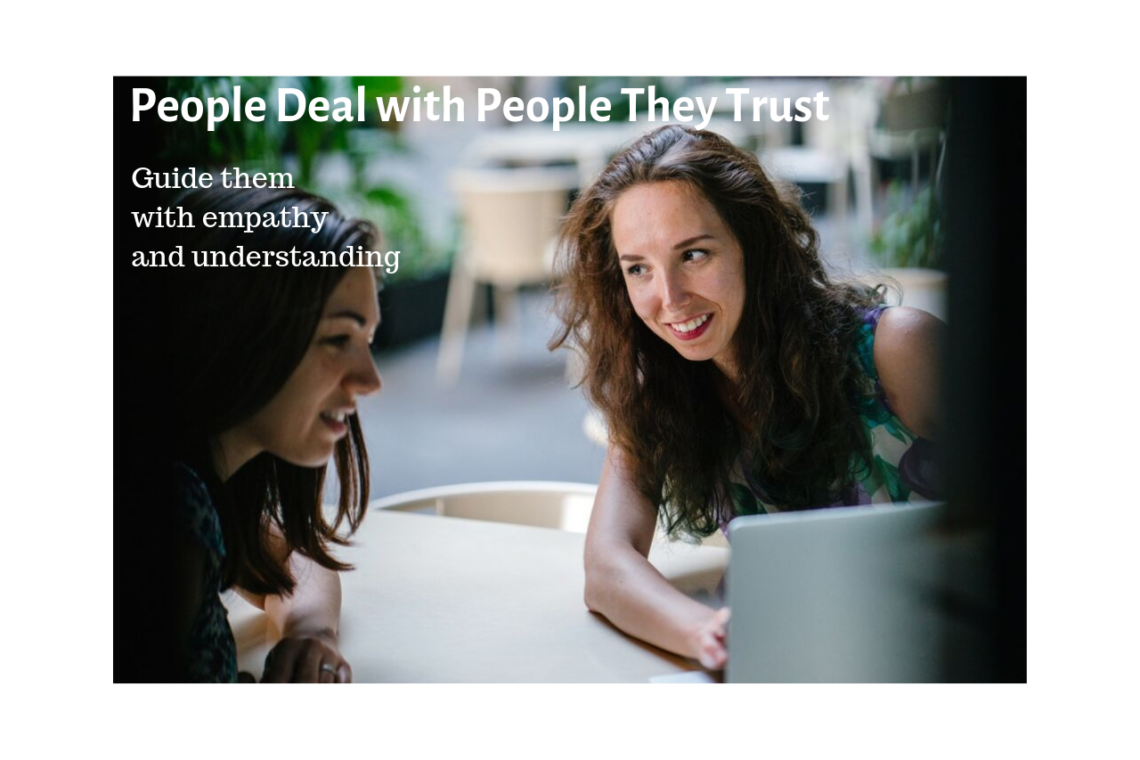
The Natural Lighting Expert ... avoiding flash
For newborn photography natural light is best but may not always be sufficient depending on the room you are shooting in.
Let’s touch on increasing your ISO without fear of Digital noise or grain as it was called in the days of using film and negatives.
Most modern DSLR or mirrorless cameras can take perfectly adequate and noise free photos using high ISO settings. When I first started with digital I was stuck in the mindset that I had to keep my ISO as low as possible with ISO 100 being the ideal.
This fallacy was based on an old “film” mindset and today I happily shoot as 2000 ISO or higher knowing that my camera can handle it quite comfortably and if not I can correct images in post-processing.
Test your cameras ISO limits to gain confidence in shooting at higher settings.
I start all my studio work at ISO 640 and it usually stays there.
For newborn photography you do not want a flash going off.
Besides being a distraction, and possibly bad for baby’s eyes, getting the settings right without taking a dozen test shots is a challenge. You’ll probably get it all right only to find that the ongoing flashes have woken the baby up just as you’re ready to start photographing.
Use natural lighting with soft white reflectors to get the lighting you require.
If natural lighting is not adequate (and this can often be the case) then use continuous artificial lighting that can be adjusted as required.
Avoid using flash – Continuous LED lighting will not only provide the required lighting but it will also show you exactly what the image will look like, before you press the shutter.
What’s more it won’t heat up the room and make everyone (especially baby) uncomfortable and unhappy.
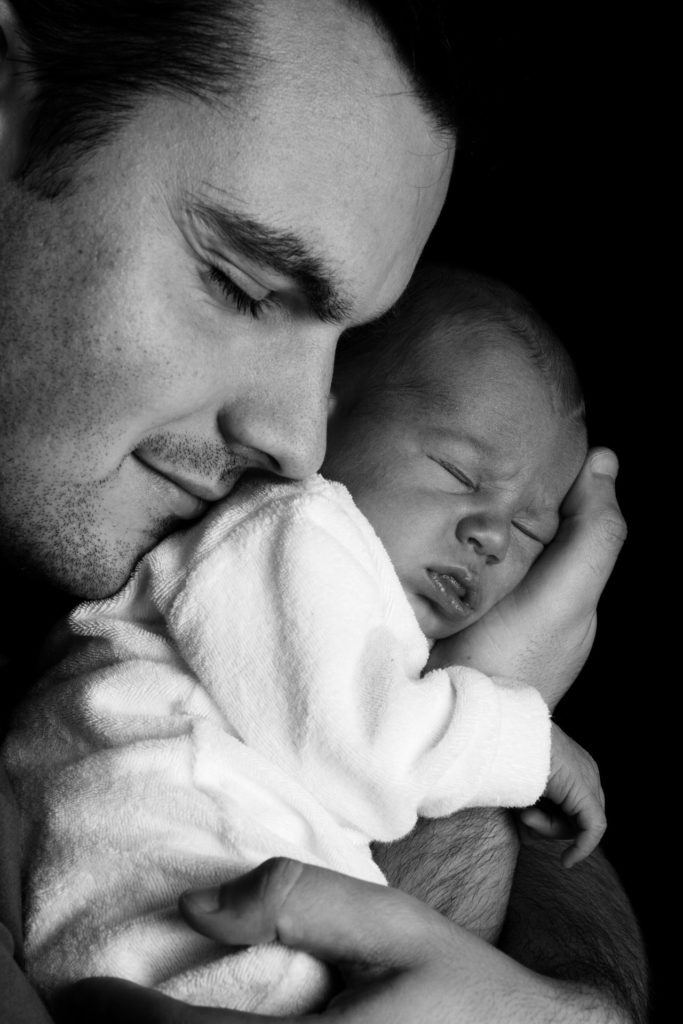
The 3 Phases of The Newborn Photographer ... more hats!
Possibly the most difficult part of any newborn photographers business is securing clients.
This can be particularly hard for you as a beginner trying to break into the genre and establish yourself as an expert.
There are thousands of ways to market your services but essentially you go through three phases on all newborn photography sessions.
Each phase leads to the next and if done correctly the last phase leads back to the first with new or established clients – the whole idea of marketing is to create a sustainable business that is self-promoting.
Let’s look at these phases.
The Prenatal (Antenatal) Newborn photographer ...
This is the most important phase of any Newborn photography session – it’s also the most difficult.
- Get this phase right and everything that follows including your newborn photo session is likely to be a great success .
- Get it wrong and it is almost impossible to recover.
The expectant new mum is unlikely to phone you out of the blue so you will have to go and find her through marketing.
Once you meet her your service begins. – and it does NOT start with a sales-pitch!
It starts with a sincere, warm and enthusiastic greeting:
“Wow congratulations, when is baby due?
Oooh yay a Christmas/spring/fall baby!
Your first?
What would you like, do you know what it is?
So exciting ...“
Note to male photographers – this is all done in very rapid “girl-talk” as only girls seem to be able to do!
I’m not at all good at it and have to continually practice. Sucks being a guy when it comes to newborn photography – let me tell you.
You have to first win mum’s trust to get her to invite you, or agree to a second meeting where you promote yourself subtly.
It could take several coffee meetings before you even broach the subject of a newborn session and often it is better to wait for them to ask.
Newborn photography is very personal, more so than other photography genres, and you need to let your customers know that you have their best interests at heart.
Ask questions relating to what they want and market your services and products around their dreams and goals.
This is the beginning of you positioning yourself as the Newborn Photographer that can deliver the stunning images she dreams of.
For example if you specialise in albums or wall art then show them albums or wall art of other babies you have photographed but don’t comment on the actual album. Rather go through it asking if they like the colours the baby in the photo is wearing. Or the poses.
Do they like black and white photography etc.
Eventually they will ask about the album or state that they want something similar and you go from there.
Once she has agreed to consider hiring you present your contract and go through it in great detail.
Make sure all parties understand the contract in full; answer any questions that may arise and make absolutely certain they understand the procedure you follow and your charges and costs of product.
Thereafter continue your subtle self-promotion through demonstrating.
Do not leave immediately after the contract is signed. Spend some time with her just talking in general or answering any specific questions she or they may have relating to all aspects of the session, you, your photography, your family or your business.
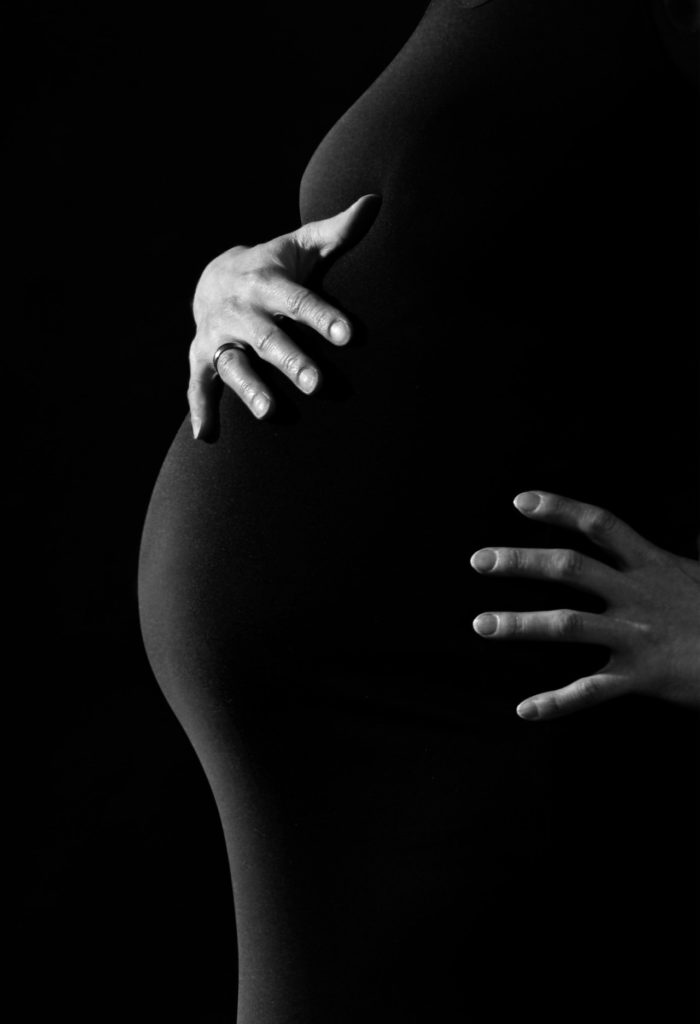

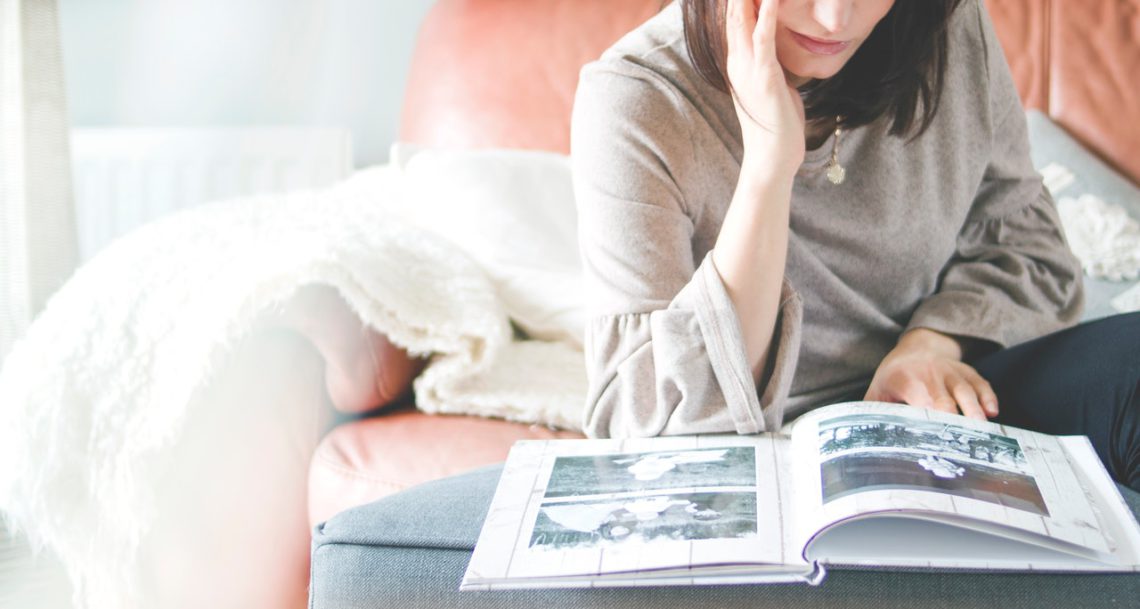
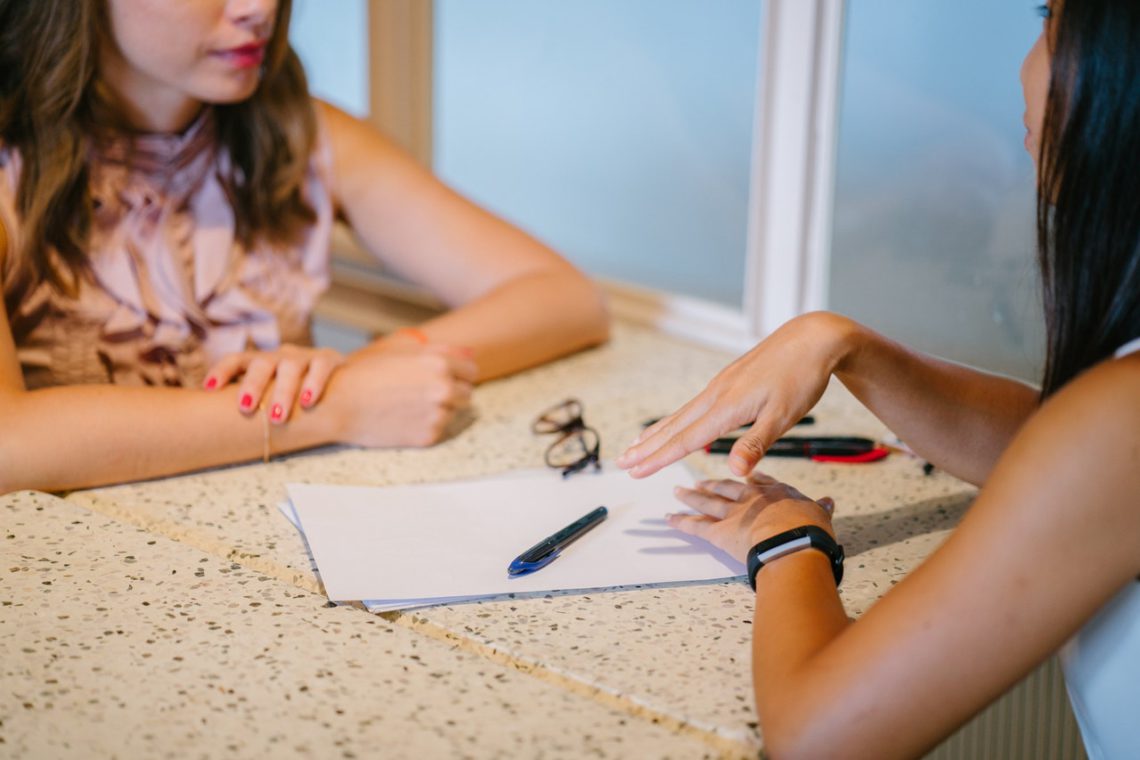
You are building a trusting and a long-term relationship with them.
This is moving into the Confident Director phase where she will be see that you do know what you are talking about and will be able to guide her and her little one (and any other family members) through a photo session that she wants but has no idea of what to expect.
She will have seen your albums and photos and knows you can pose her newborn as well as create the correct lighting and take stunning photos.
She starts to trust that you will be running the show and can hand control over to you during the session.
This is a relief to her.
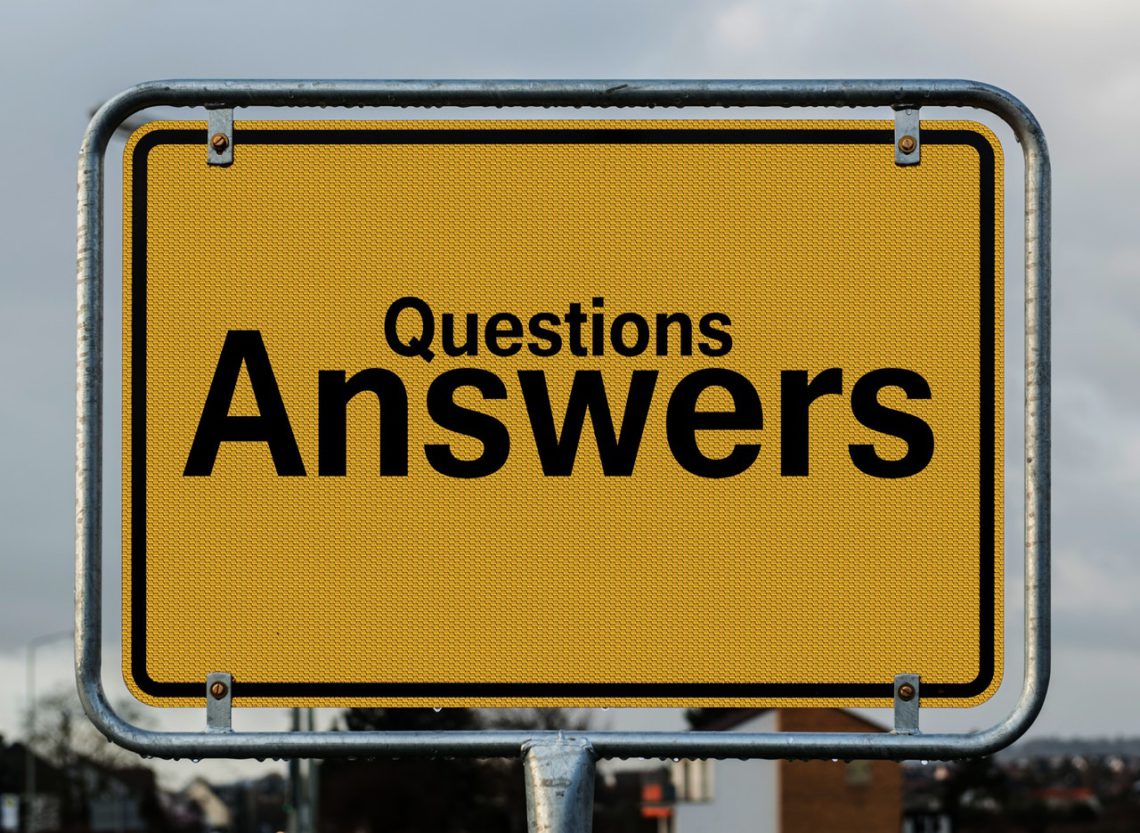
How you handle this part of the process will determine how smoothly the photo session and subsequent sales go.
This phase is also the start of the Empathetic Caring Confidante.
- If she asks questions answer them truthfully.
- Be empathetic to her needs and goals.
- Listen with a view to hearing and addressing her concerns.
- Leave if she get’s tired, starts losing concentration or there are distractions. Don’t overstay – you can always come back when it suits her better.
- Ask lots of questions relating to what she wants by way of poses, colours, who is to be included in photos etc.
- Be cognisant of any siblings – they too are excited, confused and don’t know what to expect. Guide them where you can and answer their questions just as honestly as you do mum and dad’s questions.
- First of all you may be dealing with a new mum who has never considered how to wrap a baby for photographic purposes. Wrapping for photography needs to be precise if you want to produce outstanding photos.
You will need to be able wrap and teach mum-to-be how to do it too. - If you have shown that you are competent she will hand the job over to you on the day of the session knowing that you are trustworthy, know what you are doing and will keep her baby safe and warm.
- You could be dealing with a family who have never given much thought to holding and handling a baby for a photo session.
Newborn photo sessions are different to other photographic sessions as you want the baby to sleep through most of it.
Handling and moving a baby so it stays asleep requires some experience and of course a recently fed newborn makes things easier. - Siblings of all ages need to be shown how to handle the new addition – as do most fathers!
You do not want to be teaching these things to them on the day of the session and it is best to have them all fully prepared and able to perform at a moments notice.
Prepare everyone for as much as you can long before the baby is born and the session should be a breeze.
The Session - it's showtime and time to show you're the real deal
The big day arrives and it should be well organised by this stage.
Here’s a behind-the-scenes video from one of the world’s best Newborn photographers – watch how well organised Ana is.
Comes the big day everything should be in place and ready to roll when the family arrives.
This is the easiest part of the whole process because it is the area you thrive in and the family knows exactly what to expect.
Hopefully mum has the newborn ready to feed and take a nap straight away. If not be patient they eat and sleep a lot – it will happen and a later start is not the end of the world.
Your studio (or their home) is set-up as intended and you can get started as soon as baby says so!
All you have to do is follow the flow chart you prepared well in advance.
Keep the session moving along at a pace that suits baby (and mum) and stop when necessary but take advantage of the sleeping infant to get as many different poses and photos as possible.
Go from nude to wrapped or wrapped to nude and include siblings and parents wherever appropriate.
Stop to eat and feed when required and ensure that mum, dad and siblings have access to food and drink at all times.
Ensure that the room is warm enough but not too hot for baby.
I like to end the session with the entire family in a less formal pose – they will be happy and exhausted and generally love seeing this photo later.
I then request one more photo with me in it – a subtle reminder to them of who the photographer was and a reminder to me of who is who when they come back. A clever little marketing trick I learned somewhere along the way.
They get this last photo for free as a thank-you card a few weeks after their order has been delivered.
The Postnatal Newborn Photographer ... the shows not over yet - it's only just begun!
Having completed the session the marketing begins in earnest!
Yes that is correct the marketing and branding of your business starts in earnest after each and every newborn session.
Think about it …
- You have just spent months with a wonderful family at one of the most exciting times of their lives.
- You have stunning photos of their Newborn to present to them in a beautiful album (or whatever format they chose)
- You are fresh in their minds of a memorable day and build up to it
Do you think they love you?
Will they talk about you to their friends and family?
Will they show the photos off?
Of course they will.
All you have to do is to continue to be yourself.
Stay in touch, meet for coffee, contact them on special days such as birthdays, anniversaries etc. and please do so by phone call or a hand written message or card.
A personally written card or message carries so much more weight than a FaceBook message received on the day. You can do that too but imagine the impact a personalised hand-written message has.
Keep in touch in a personal, non-threatening and unobtrusive way – the referrals will come.
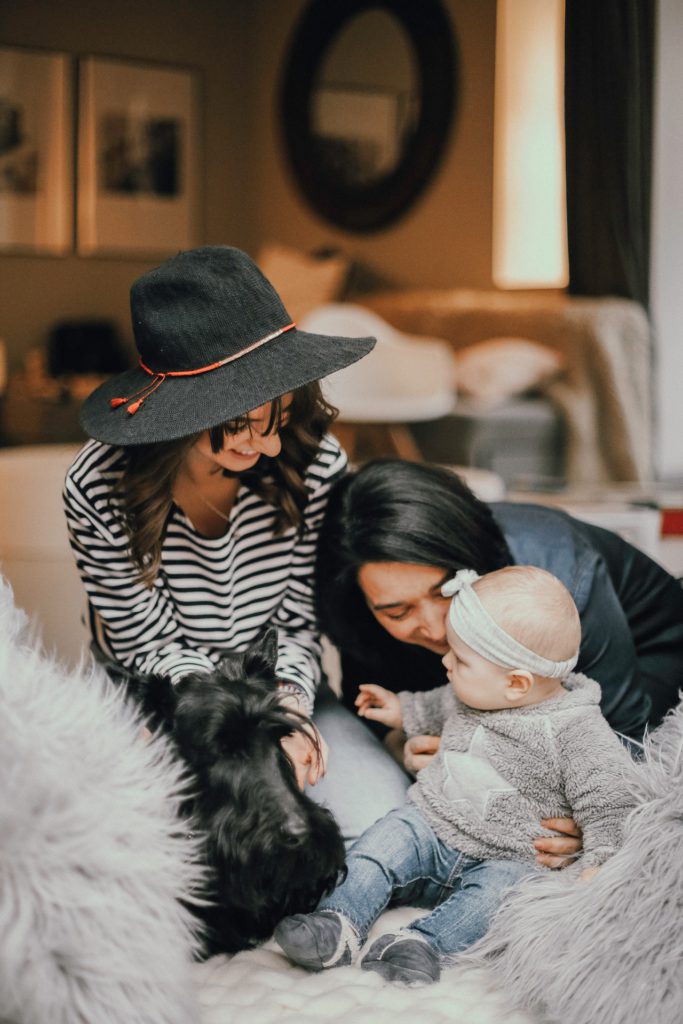
Where to Start ... learn before you earn
Crawl before you walk …
I found there were two brand new skills I had to learn from scratch:
- Posing a Newborn – this is a lot more difficult than it looks and definitely something you need to learn long before you do a live session. The problem of course is having a newborn to practice on. And if you lucky enough to find one they don’t stay “Newborn” for very long!
- Wrapping a Newborn – I didn’t even know what wrapping was until my first grandchild was due. Again not as easy as it looks and my first attempts came out lumpy as boarding school porridge.
Both these skills can be learned with practice but getting a real or realistic model can prove very difficult, and of course there is the safety issue.
So how does one become an expert newborn photographer encompassing safety and all the skills required?
By practicing and then practicing some more (and then some more again)!
But Where to Find Newborns to Practice On?
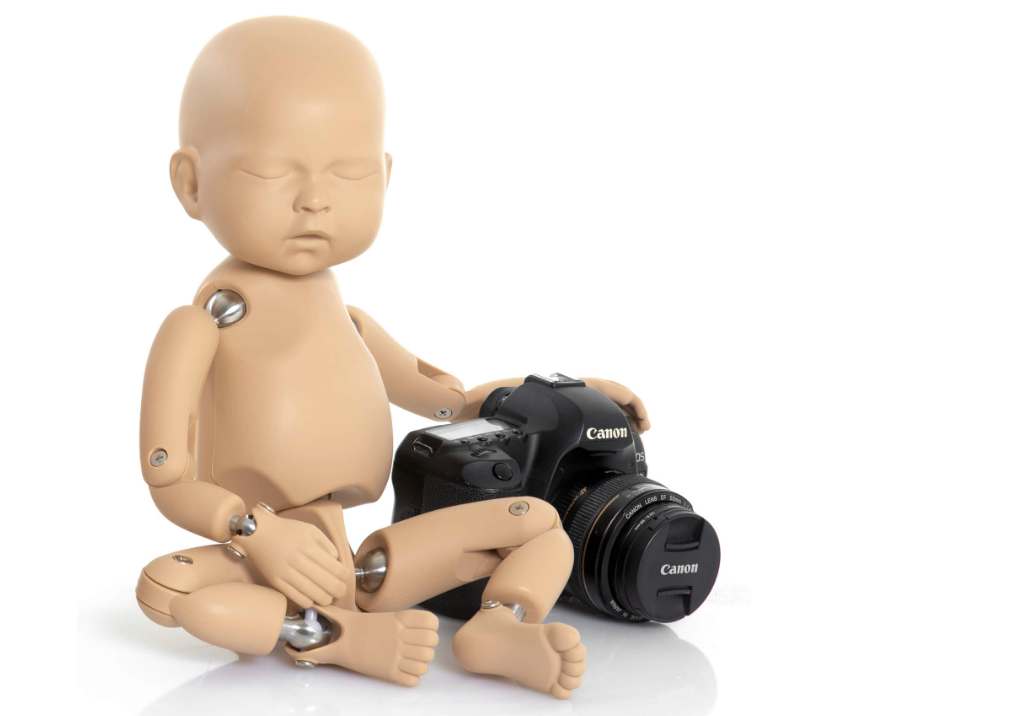
Your Very Own Baby For Photography ... available 24/7
Introducing the StandInBaby - the ideal prop for Newborn photography
What if you could have your very own newborn baby for photography, one that you could practice on whenever you wanted?
Now you can own your very own baby for photography!
Introducing StandInBaby (SIB) – a realistic fully articulated newborn doll/manikin.
Available from StandinBaby.com: US$539.00*
*Use Coupon Code “MPS25” at checkout to get US $25.00 off – availble to all readers of this site.
Designed with purposely engineered joints that simulate exactly the full range of movement of a real newborn baby.
Each of the joints – neck, shoulders, elbows, wrists, hips, knees and ankles, have been extensively researched.
Thousands of measurements and x-rays of new borns (aged 0 -6 months) have been studied and analysed to produce a product that replicate the actual size, weight distribution, body shape and the full range of movements of a newborn baby.
Not only do the joints move exactly the same but the SIB even has the same limp, or floppy, feeling that a newborn has.
Weighing in at 6.3 lbs (the average weight of a newborn) the SIB needs to be supported when held – exactly the same way as a newborn would need to be.
And it’s not only the joints that are replicated.
Not only has the weight being carefully calculated and correctly distributed through the body, the length and body parts are all sized to that of an average newborn. Skin tones too have been replicated and there are dark and light babies available.
The StandInBaby is so realistic that people have said owning one invokes a natural feeling to nurture.
Key Features of the StandInBaby - your very own baby 'model' for your Newborn photography
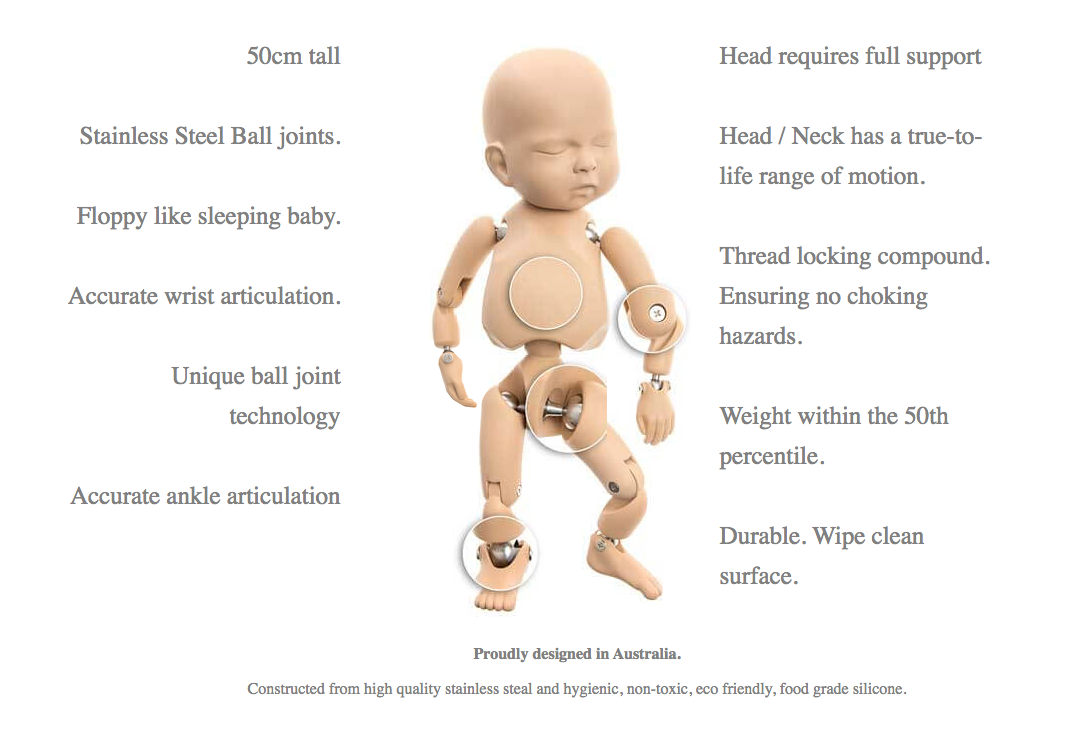
Watch the precise movements of this incredibly cute replica of a Newborn …
Using your Stand in Baby for Photography ... practice and training
Having a perfect model available 24/7 is incredibly handy.
It enables you to practice and perfect any of your techniques that you feel need improving or fine tuning, making maximum use of any down-time you may have.
For example:
- Practice your wrapping – while watching YouTube video tutorials.
- Practice your Newborn posing without fear of having an accident.
- Check and practice your lighting until you have it perfected.
- Train your assistance to know exactly what her duties are.
Using your Stand in Baby to Demonstrate Your Skills
Picture this …
Don’t do this on the first meeting – but for the second or third one definitely try this. By now you should have a created a pretty good bond with the prospect.
This will now cement that bond making it very difficult for anyone else to secure your prospect as a customer.
You meet with the pregnant mum-to-be taking with your StandInBaby swaddled exactly the same as a real baby would be.
Do you think it would be a talking point?
Let her hold and cradle the “baby” and explain how you use it to decide on poses and how it can be used for practicing wrapping for photography.
If she has any other children let them participate and hold the SIB so they can experience what it will be like when the new baby arrives.
Just having the SIB there will create tons of conversation, raising questions and creating fun. It’s a fantastic way to win over a soon to be mum and to present yourself as a photographer who stands out amongst your peers.
Offer to sit with her and go through some wrapping techniques and decide on poses that she likes. Use this friendly session as the start of your proposed flow chart.
If you have an album with you choosing and showing how certain poses are achieved is so much easier.
“Oooh … I love that pose. Can we do that one?”
“Here let me show you how we do that.”
The more she handles the SIB at this meeting the better, she will look upon you as the expert you are and the friend you are fast becoming.
Do you think you may have raised her excitement levels and anticipation for the photo session?
Watch How to Use One Wrap To create 7 Different Looks
What Photographers Say About Having Their Own Baby for Photography
Of course the real test of any product comes through actual use so let’s see what others have to say about the StandInBaby and how it has benefited them, their business and their clients.
The following is just a small sample of the thousands of 5 star reviews the StandInBaby has received from photographers at both ends of the experience scale.
Enjoy!
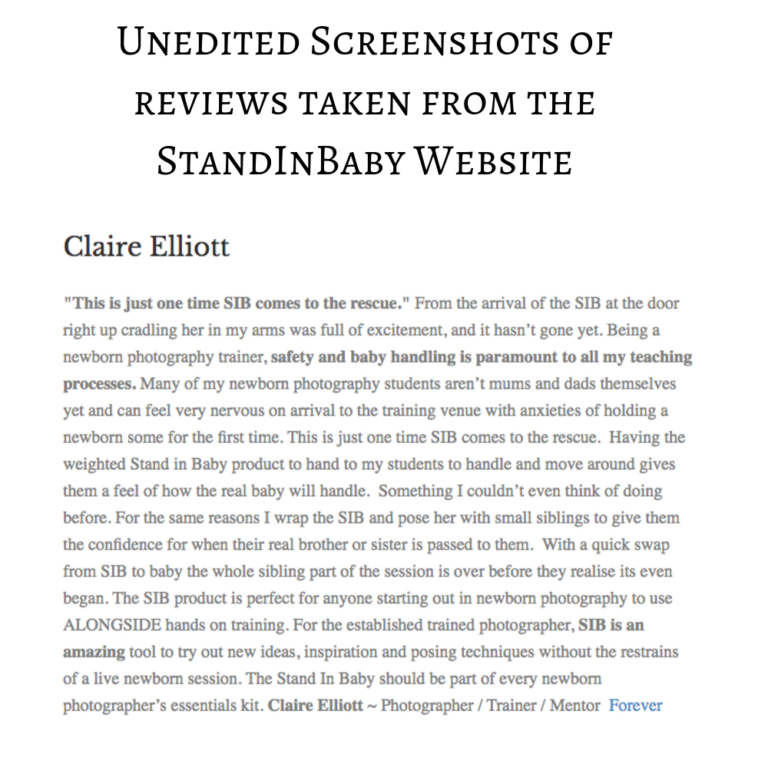


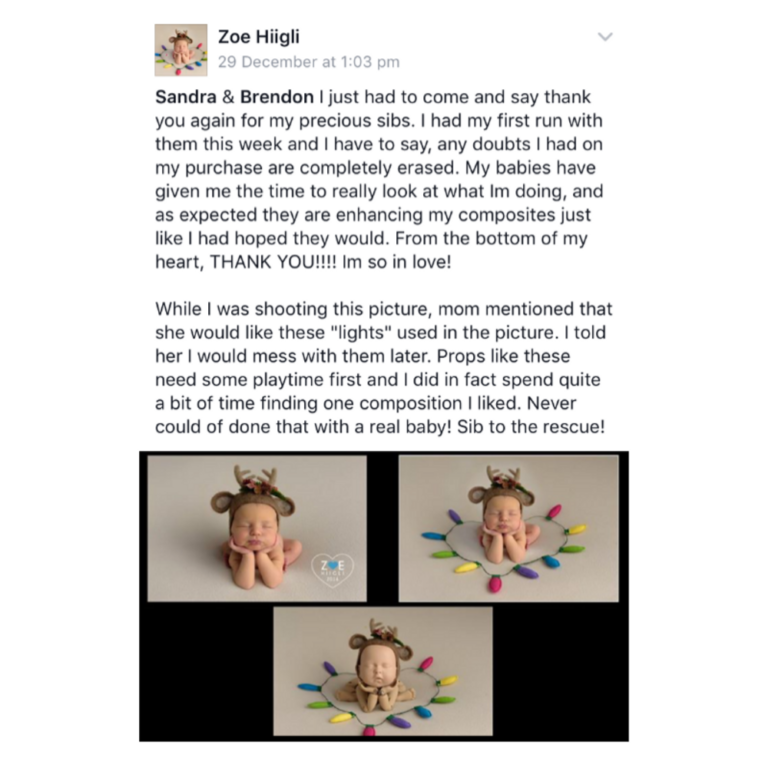
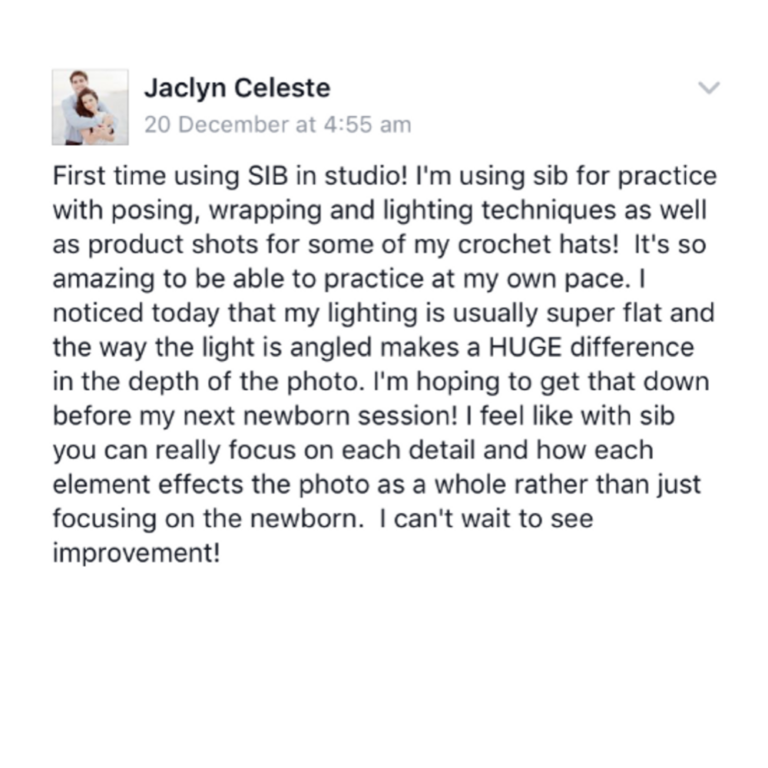

Is The StandInBaby Worth The Money?
I think the reviews above clearly indicate that the StandInBaby is worth every cent.
In fact I know that the SIB will pay for itself from the very first session and then over and over again.
It’s an absolute game changer and … more useful than any other prop.
Get your StandInBaby today- directly from the the manufacturer with US$25.00 discount when you use the Coupon Code “MPS25”
Consider this …
The Perfect Newborn Lens ... hours of deliberation and hundreds of dollars later
I have personally spent hours and hours researching the perfect lens for a particular genre. Often when found I am then put off by the high price of a lens and wonder if it is worth it.
This is a natural consideration and applies equally to newborn photography.
In truth there is no “perfect lens” – for newborn photography anything from a 24-70mm or even longer should be more than adequate. A large aperture f-1.8 is great but not essential.
Budget and working space constraints will determine.
But here is what I want you to think about.
A lens can be insured and replaced if dropped.
AND … a superb lens will highlight and emphasise any faults in your wrapping or posing.
An unhappy client cannot easily be replaced and may cost you thousands in referrals.
Customers do not talk to their friends about your lens!
They talk about the incredible experience they had and the way you treated them and their family.
They show off the awesome photos of their adorable baby.
Service is the number 1 criteria by which we are all measured.
Results are next in line.
Being confident, professional, empathetic and capable is what get’s us the business.
The StandinBaby is useful in so many ways and the return is quite simply incalculable.
Now let’s talk safety (again) …
Drop a lens and insurance replaces it.
Drop or have an accident with a baby – too horrific to even discuss – let’s not go there!
The First Prop Any Aspiring Newborn Photographer Should Buy
There are hundreds of fabulous props a newborn photographer could use to enhance their images.
Props should only be used to enhance the cutest little subject on the planet (and certainly the most special in mum and dad’s eyes).
Before you go off buying bean bags, cribs, wooden buckets, pilot outfits and the million other props available I strongly suggest your priority should be posing and lighting and they take hours and hours of practice – as all Newborn photographers know.
For this reason I would highly recommend that the first investment you make on your journey to becoming a newborn photographer is in a StandInBaby package: the SIB, posing book and access to free training videos.
See image on the right.
These will get you off to a flying start, saving you hours of struggle, help you with your marketing and let you know very quickly if newborn photography is for you.
Conclusion
There is a lot of information here for any aspiring Newborn Photographer to get you started.
To summarise:
- The Newborn’s safety and comfort are paramount
- Schedule the Newborn photo session within 12 days of the baby being born
- Use natural lighting whenever possible
- Take breaks often – including feeding breaks
- Use a flow-chart to ensure an organised progression from one pose to the next.
- Spend a lot of time educating the mother-to-be and other family members on what to expect
- Show them your wonderful products
- Practice your Newborn poses until you can do them blindfolded
- Then practice some more!
- Practice your natural lighting – in particular taking careful note of shadows at different times of day
- The best prop you can possibly get is your own baby for photography – the StandInBaby
Use coupon code MPS25 at the check-out for a US $25.00 discount when you buy your StandInBaby.
I hope this post helps you get started on a successful Newborn photography career – if you follow the recommendations it definitely will.
Remember it takes a lot of practice to get it right. Do what others aren’t prepared to do and you will stand out.
And finally – please let me know your thoughts in the comments below.
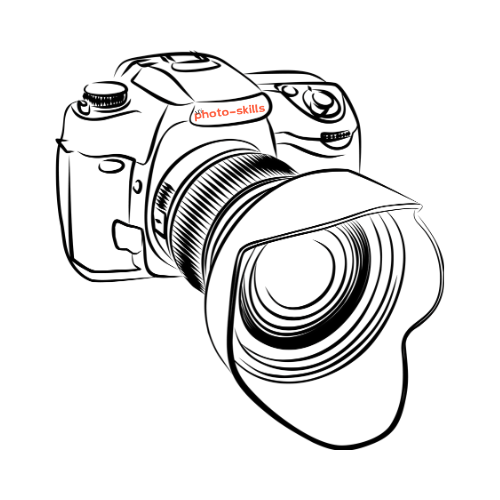
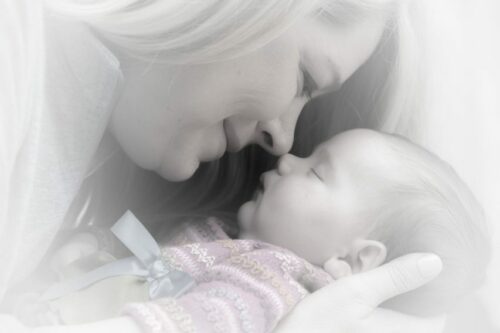
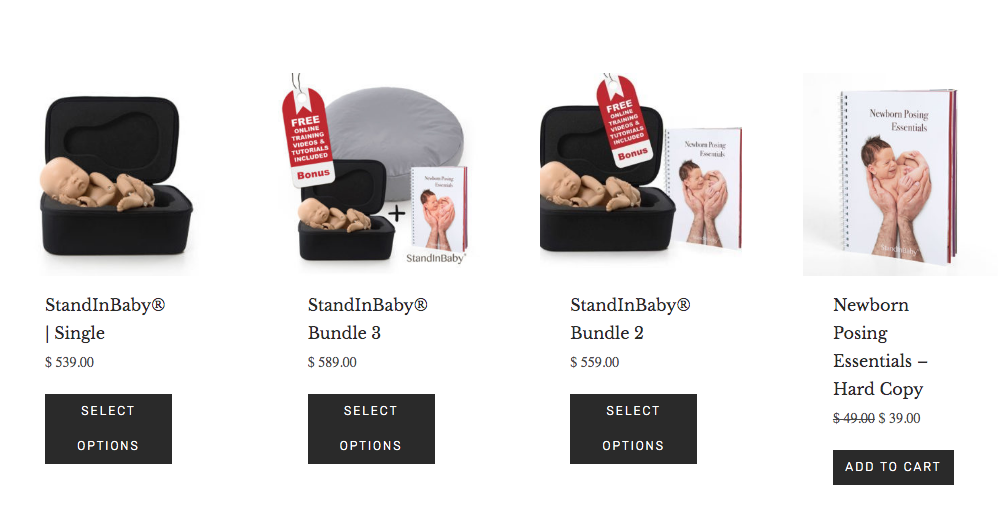
What a great guide for newborn photography. I love the lighting ideas. LED is the perfect suggestion since some lamps offer different types of light so you can play around with the lighting a bit more. The SIB is a wonderful suggestion. No one wants to practice on a real baby. lol. A little pricey but I guess it’s designed to be like a real baby. Seems worth it to become a professional newborn photographer.
Hi Paula
Thanks for popping by and commenting – and of course your wonderful compliment.I hope aspiring Newborn photographers find it as useful.
Yes at first glance the SIB does seem a bit pricey – but it pays for itself in success and dollars with the first live session after practising with it.
It’s incredible how the workflow goes when you know precisely what you are doing and in what order you want to do it.
I know it helped me tremendously with my first grandchild – the reason I got it in the first place as I hadn’t really done any newborn sessions. Of course then I also had to go off and buy a whole bunch of newborn props.
Its a bottomless pit this photography lark – that I can tell you.
All the best,
Lawrence